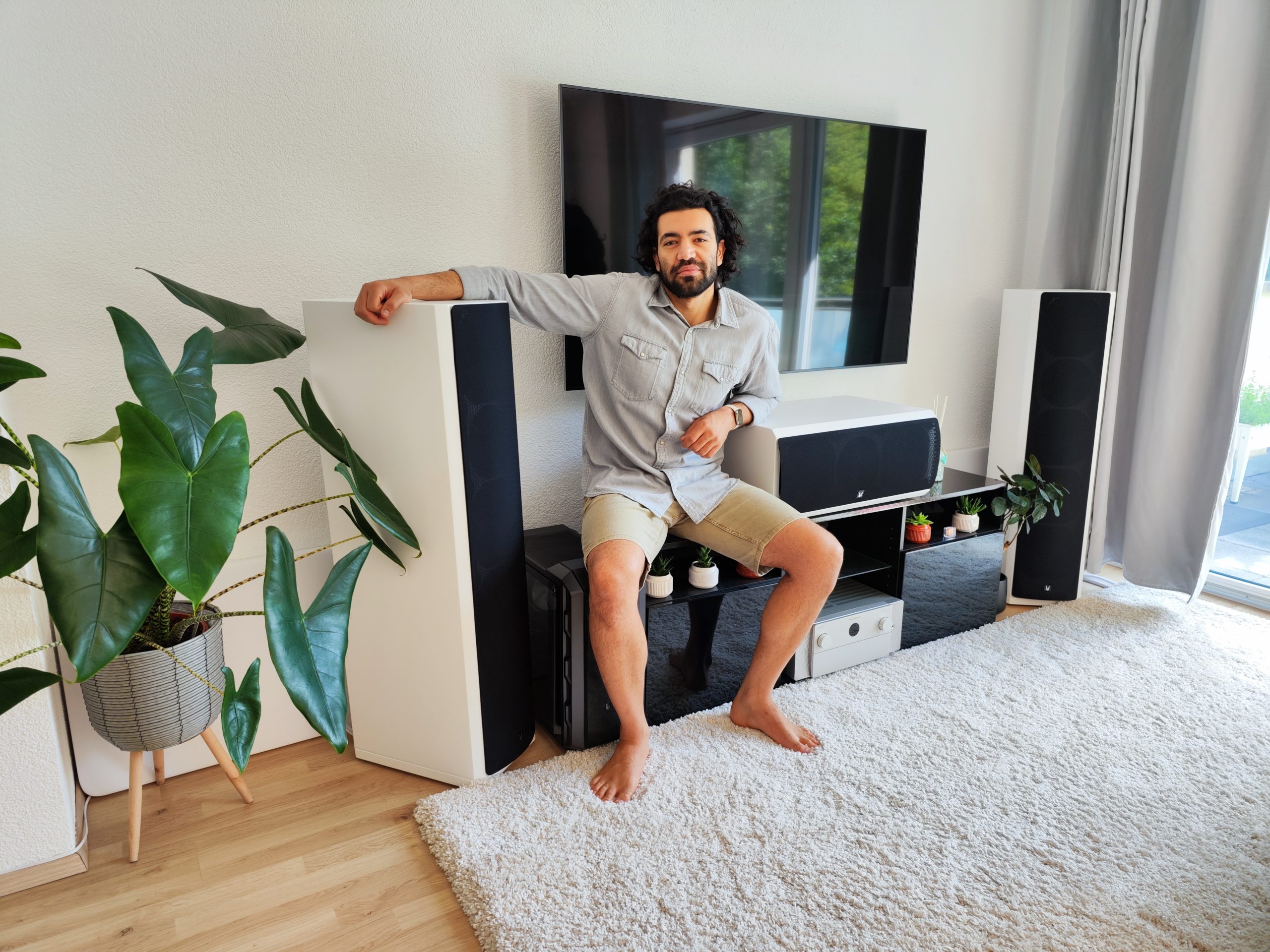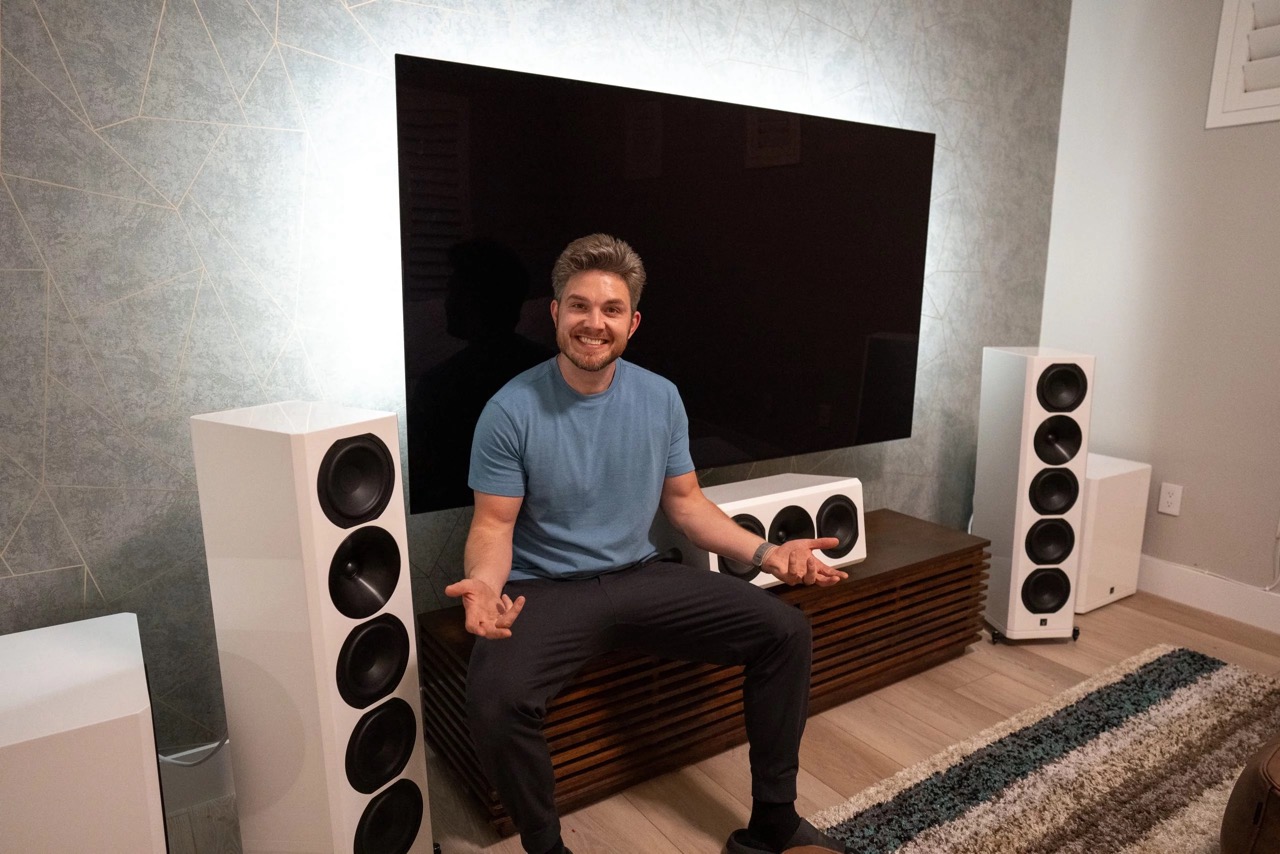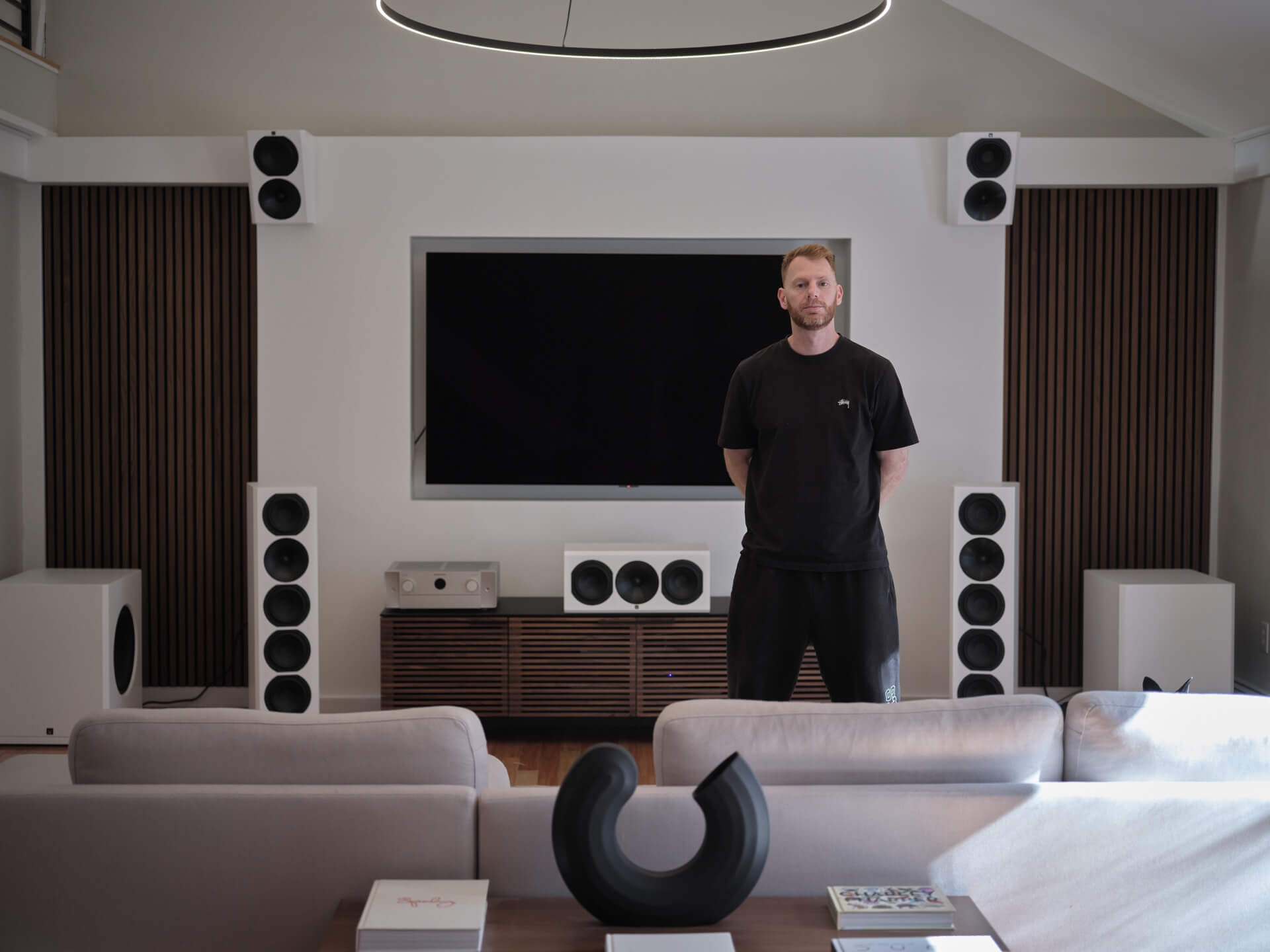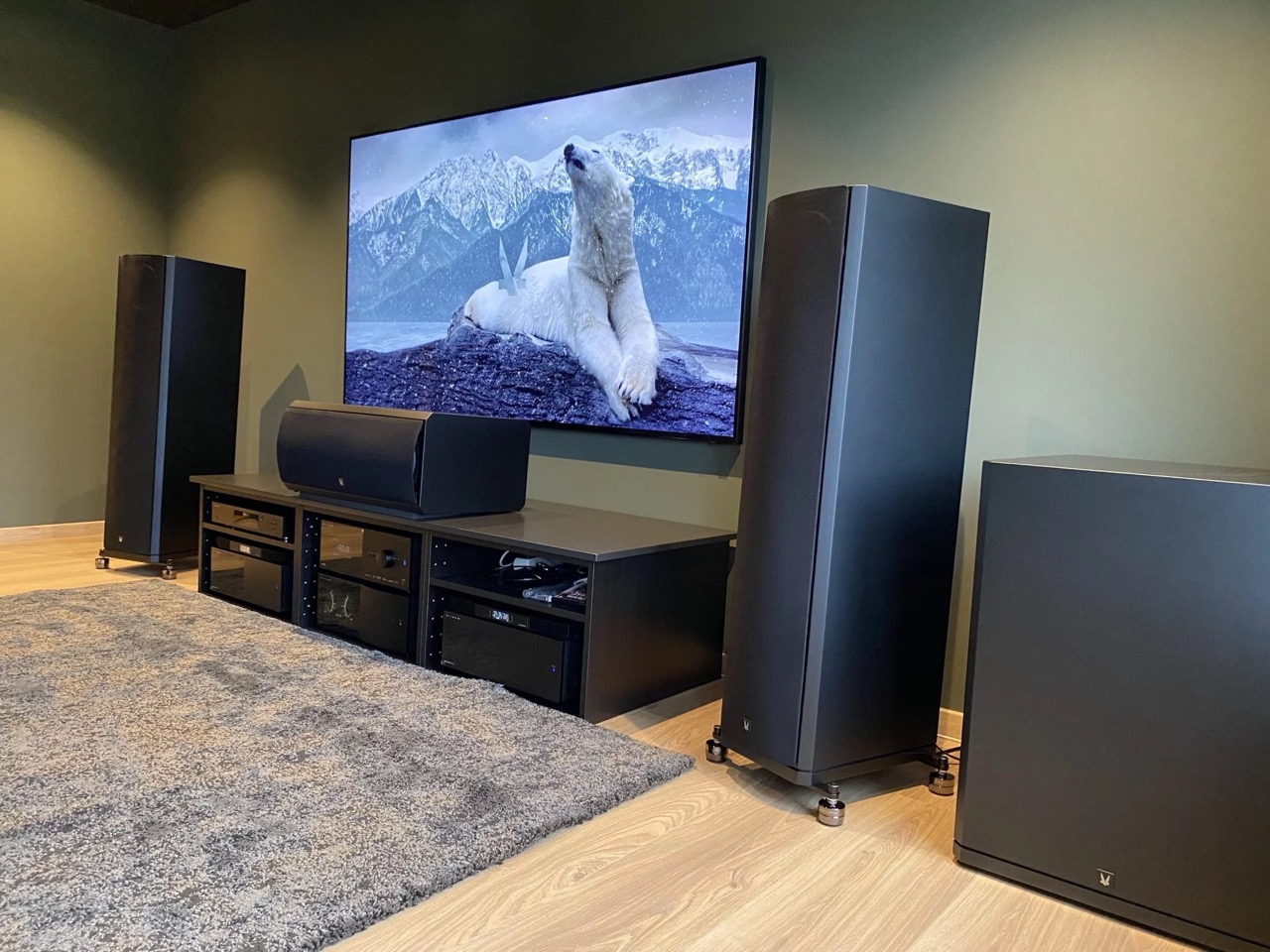Solving Home Theater Aesthetics: How to Make it Look Good
Article summary - TL;DR
- Aesthetics significantly enhance your home theater experience by creating an immersive ambiance.
- Choosing a cohesive theme and color scheme is essential for a stylish, inviting space.
- Functional decor and comfortable seating are pivotal for optimizing both sightlines and comfort.
- Accessorize thoughtfully to enhance both the technical performance and visual appeal of your cinema.
- Elevate your audio-visual setup with the 1528 Tower 8, designed to blend seamlessly into any aesthetic while delivering premium sound.
Understanding the Aesthetics of a Home Theater
When it comes to creating your dream home theater, aesthetics play an integral role in providing an immersive cinematic experience. A well-designed home theater is not only about performance but also about the ambiance and emotional impact. The way your theater looks can greatly enhance the overall enjoyment of your movie-watching experience. We’ll explore essential elements that blend form and function to create an aesthetically pleasing home theater environment.
Your home theater should reflect a space that is inviting and comfortable, yet captivates your senses when the lights dim and the movie starts. The color palette, materials used, and design coherence are vital factors in achieving a visually appealing setup. Additionally, considering the theme of your home theater can contribute to a cohesive look that resonates with your personal style.
In this section, we’ll delve into the importance of selecting a theme, choosing colors, and coordinating your theater elements harmoniously. We’ll ensure that aesthetics complement the high-quality audio and visuals that characterize a modern home cinema.
Choosing Your Theme and Style
A theme sets the stage for your home theater and guides your aesthetic choices. Whether you’re drawn to a classic cinema look, a modern minimalist approach, or a specific genre like sci-fi or fantasy, your theme can be reflected in every detail from seating to wall art. A cohesive theme helps in creating an environment that’s true to your vision of a home theater.
Deciding on a style involves considering the current decor of your home and how the theater will integrate or stand out. This might mean incorporating vintage movie posters for a traditional theater vibe or slick, black panels for a contemporary space. Your style should be an extension of your personality, ensuring that you feel at home and at ease within the space.
We’ll provide tips on selecting a theme that tells a story and gives your theater a unique identity. Next, we’ll discuss how to apply it to various elements of the theater room, from the color schemes to accessories, creating an engaging and stylistic viewer experience.
Color Schemes and Paint Choices
The colors you choose for your home theater walls, floors, and ceilings can dramatically affect the perceived size of the room, the quality of the projected image, and the overall atmosphere. Dark colors tend to absorb light, reducing glare and creating a focused viewing environment, while lighter colors can make a smaller space feel larger and more inviting.
In selecting paint colors, it is important to consider the reflective properties of different finishes. Matte or flat finishes are typically preferred in a home theater setting to avoid unwanted reflections on the screen. We’ll guide you through selecting high-quality paints that serve both an aesthetic and functional purpose.
We’ll also discuss coordinating your paint choices with other room elements to ensure a harmonious and inviting ambiance while making practical decisions that enhance viewing pleasure. With proper planning, your color scheme will contribute to the overall efficacy and beauty of your home cinema.
Functional Decor and Seating Arrangements
Comfortable and carefully arranged seating is a cornerstone of any home theater’s design. When planning the layout of your chairs or couches, it’s crucial to consider both sightlines and the ease of movement within the space. High-quality seating can be both a statement piece and a practical necessity.
Decorating for functionality means choosing furniture that enhances the viewing experience. Recliners with built-in cup holders, storage compartments, and footrests add comfort while maintaining the room’s sleek look. The arrangement should encourage social interaction when the screen is off and provide unobstructed views when it’s time to watch a film.
In this section, we detail how to select the right home theater seating that meets the needs of both form and function. We’ll also provide tips on optimizing the placement of your seating for the best audio and visual experience, ensuring everyone has the best seat in the house.
Accessorizing with Purpose
Accessories in a home theater are not just decorative but serve to enhance the viewer’s experience. Selecting the right accessories can streamline your home-theater operation, from universal remotes to cable management systems, and add a touch of personal flair.
With a vast array of accessories available, from acoustic panels to custom lighting fixtures, choosing the right items can elevate the technical performance and the visual appeal of your home cinema. When chosen thoughtfully, these accessories tie the room together and contribute to an authentic theater atmosphere.
We’ll examine how to discern which accessories will add aesthetic value without becoming a distraction, ensuring that every addition serves a purpose. Whether it’s functional lighting, ornamental fixtures, or practical mounts and stands, we’ll cover how to select accessories that are as useful as they are stylish.
Creating a Cohesive Look
Harmony in your home theater design means ensuring that all elements work together to create a visually pleasing and functional space. Each choice should support the overall theme and contribute to creating an environment conducive to relaxation and entertainment.
Balancing different design elements requires a thoughtful approach to how they play off each other. For example, the textures of your wall fabrics should complement your seating material, and your screen frame should align with other room decor elements. Even the smallest details like the design of speaker grills or the style of your DVD collection storage can reinforce the aesthetic.
We’ll explore strategies for ensuring that every aspect of your theater room feels like part of a greater whole, with each component enhancing the others. By the end of this section, you’ll have the knowledge to create a home theater that is both visually coherent and a joy to spend time in.
Conclusion: Your Aesthetic, Your Home Theater
Your home theater’s aesthetics are as important as the technology it houses. Through careful planning and selection of themes, colors, seating, accessories, and decor, you can create a space that not only looks exceptional but feels like a true extension of your personal style and taste.
Whether it’s enjoying a movie marathon, hosting a sports event, or simply relaxing in your personalized cinema space, having a well-designed theater can significantly enhance your home entertainment experience. Remember to make choices that reflect your vision, provide comfort, and facilitate an immersive atmosphere for the ultimate home cinema experience.
With the guidance provided in this article, you’re well on your way to developing a home theater that not only meets your performance demands but also represents the pinnacle of home entertainment design aesthetics. Happy viewing!
Frequently asked questions
How can I enhance the aesthetics of my home theater?
Focus on selecting a cohesive theme, choosing the right color palette, and coordinating decor elements to create an inviting atmosphere that complements high-quality audio and visual performance.
What theme should I choose for my home theater?
Select a theme that resonates with your personal style, such as classic cinema or modern minimalist, and let it guide your aesthetic choices, from seating to wall art.
What color schemes work best for a home theater?
Dark colors absorb light and reduce glare for focused viewing, while lighter colors can make the space feel larger. Matte finishes are preferred to avoid reflections on screen.
How should I arrange seating in my home theater?
Consider both sightlines and ease of movement while ensuring that seating is comfortable and encourages social interaction when the screen is off.
What accessories should I include in my home theater?
Choose accessories that enhance both functionality and aesthetics, such as acoustic panels, custom lighting, and cable management systems, to create an authentic theater atmosphere.
How can I create a cohesive look in my home theater design?
Ensure all design elements work together by balancing textures, materials, and colors, allowing each component to support the overall theme and aesthetic.
What is the importance of comfort in home theater design?
Comfortable seating and functional decor are essential to enhance the viewing experience and allow for relaxation during movie marathons or events.
How do the aesthetics of my home theater impact the viewing experience?
Aesthetics influence the overall ambiance and emotional impact of your home theater, making it a space that captivates your senses and enhances movie enjoyment.
What should I consider when selecting paint for my home theater?
Select high-quality, matte paints that minimize reflections and coordinate well with other room elements to enhance both the function and beauty of your cinema.








